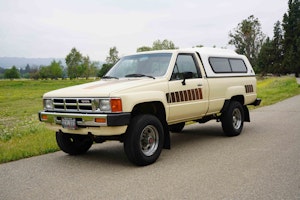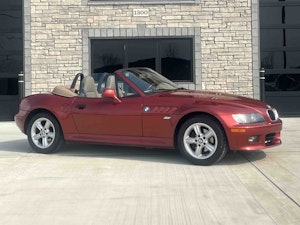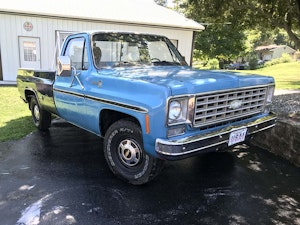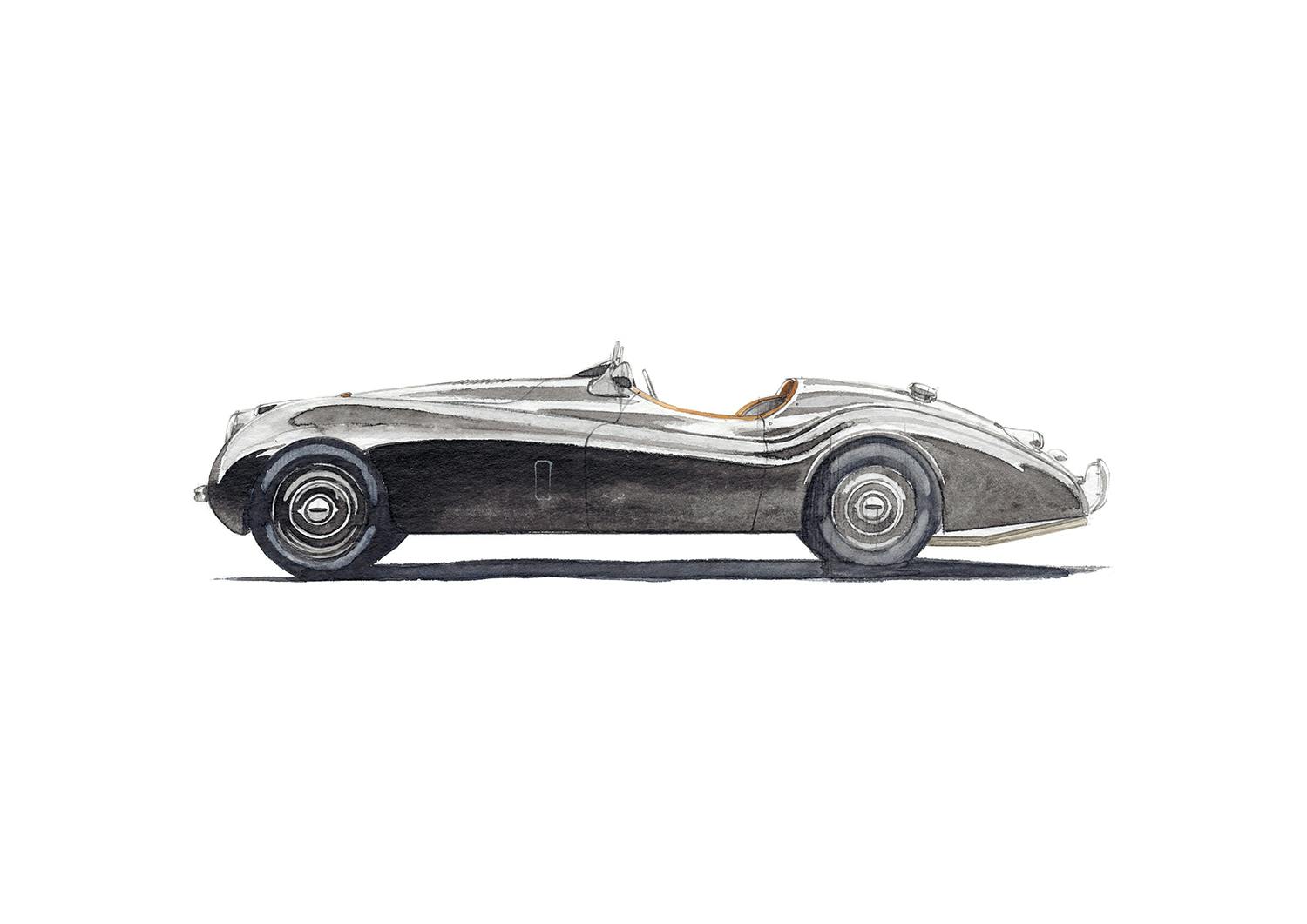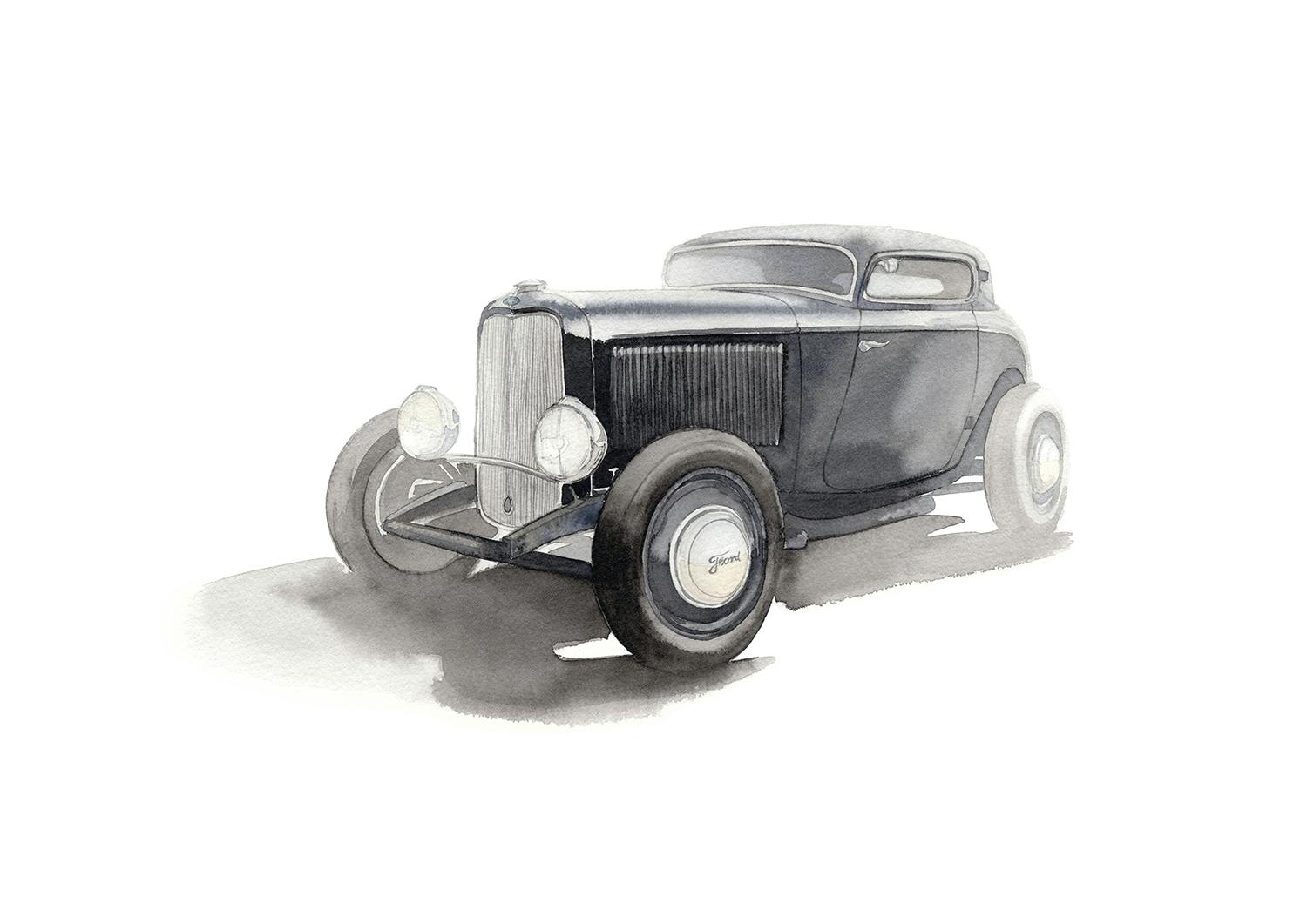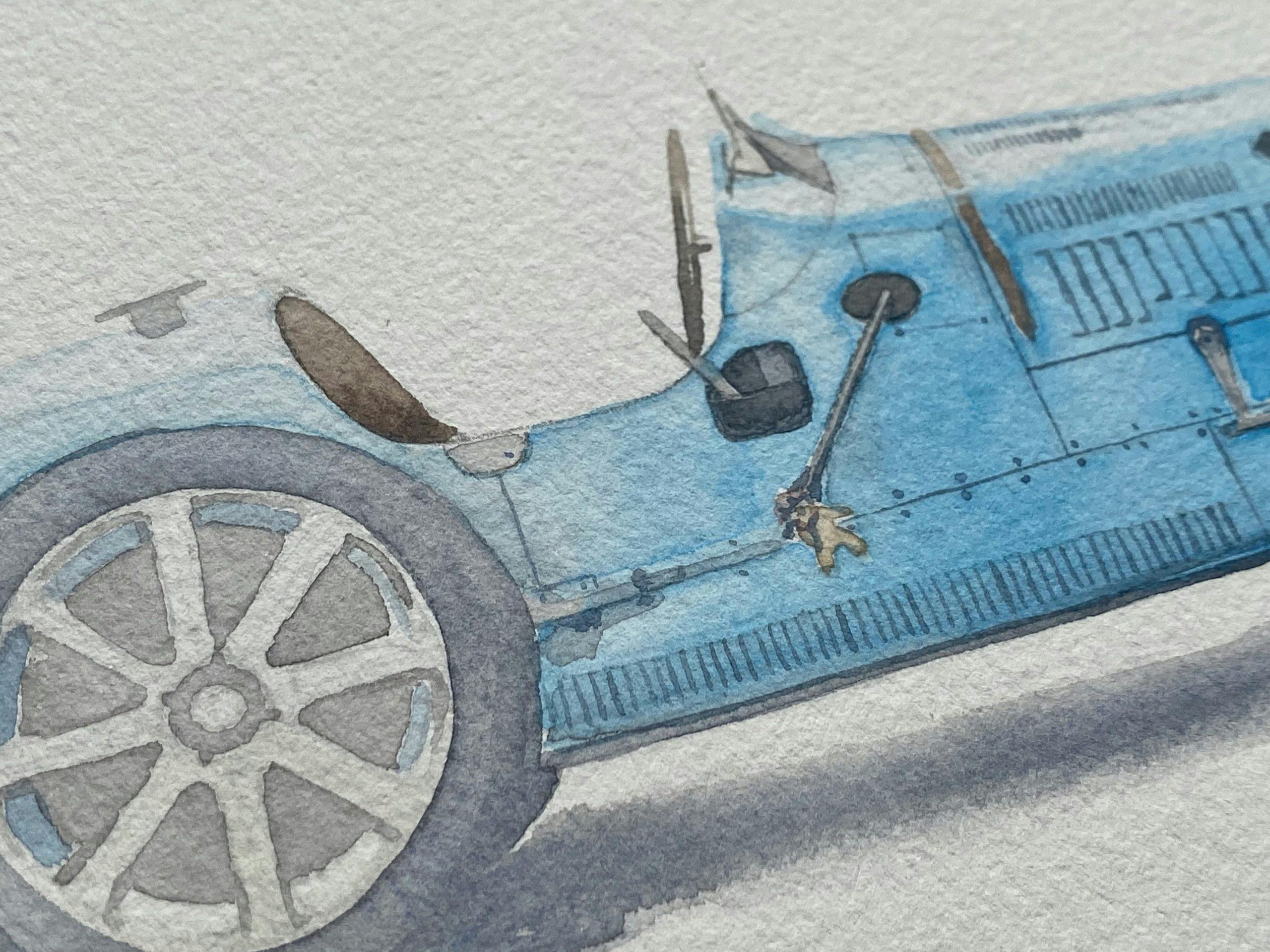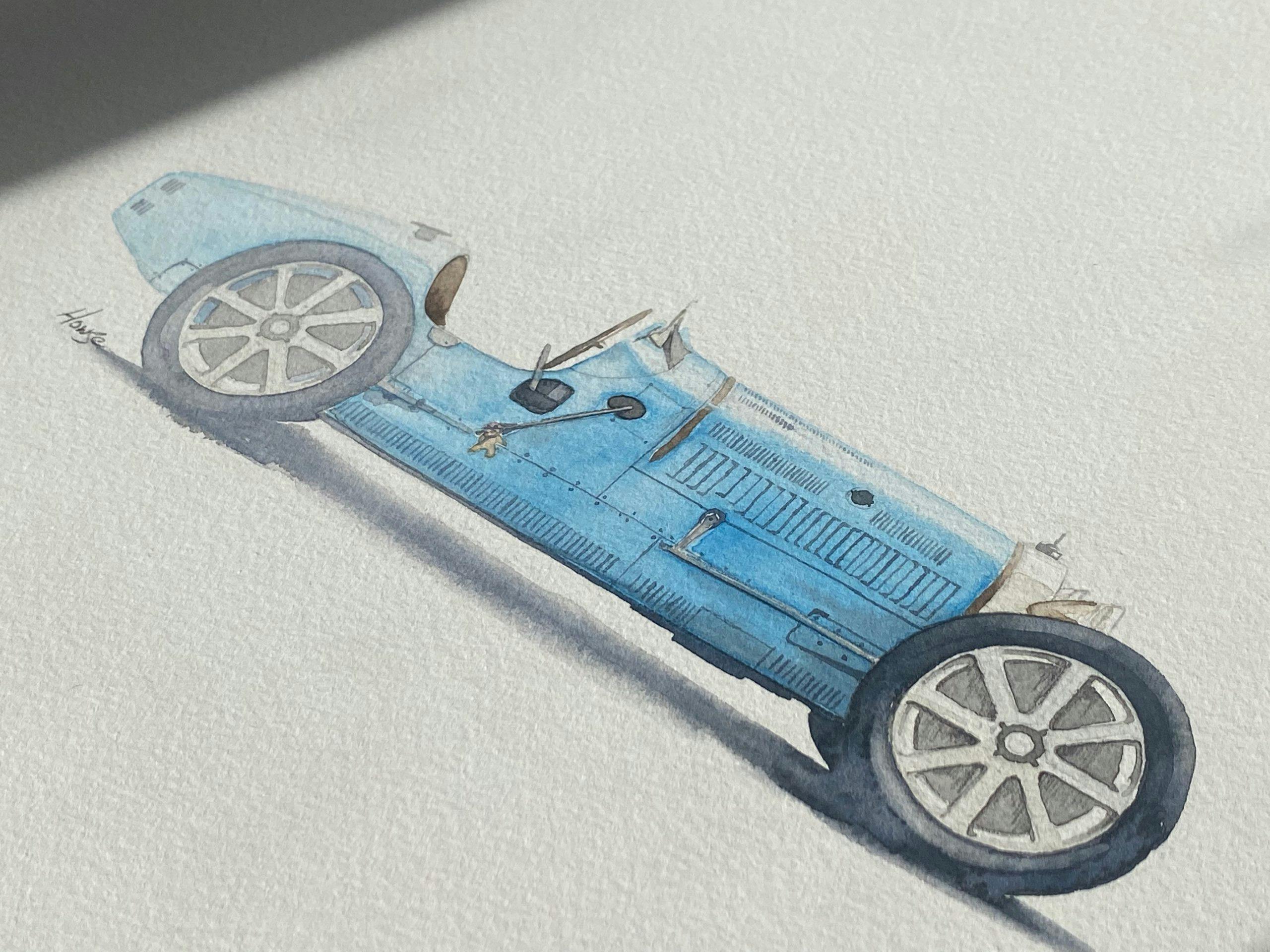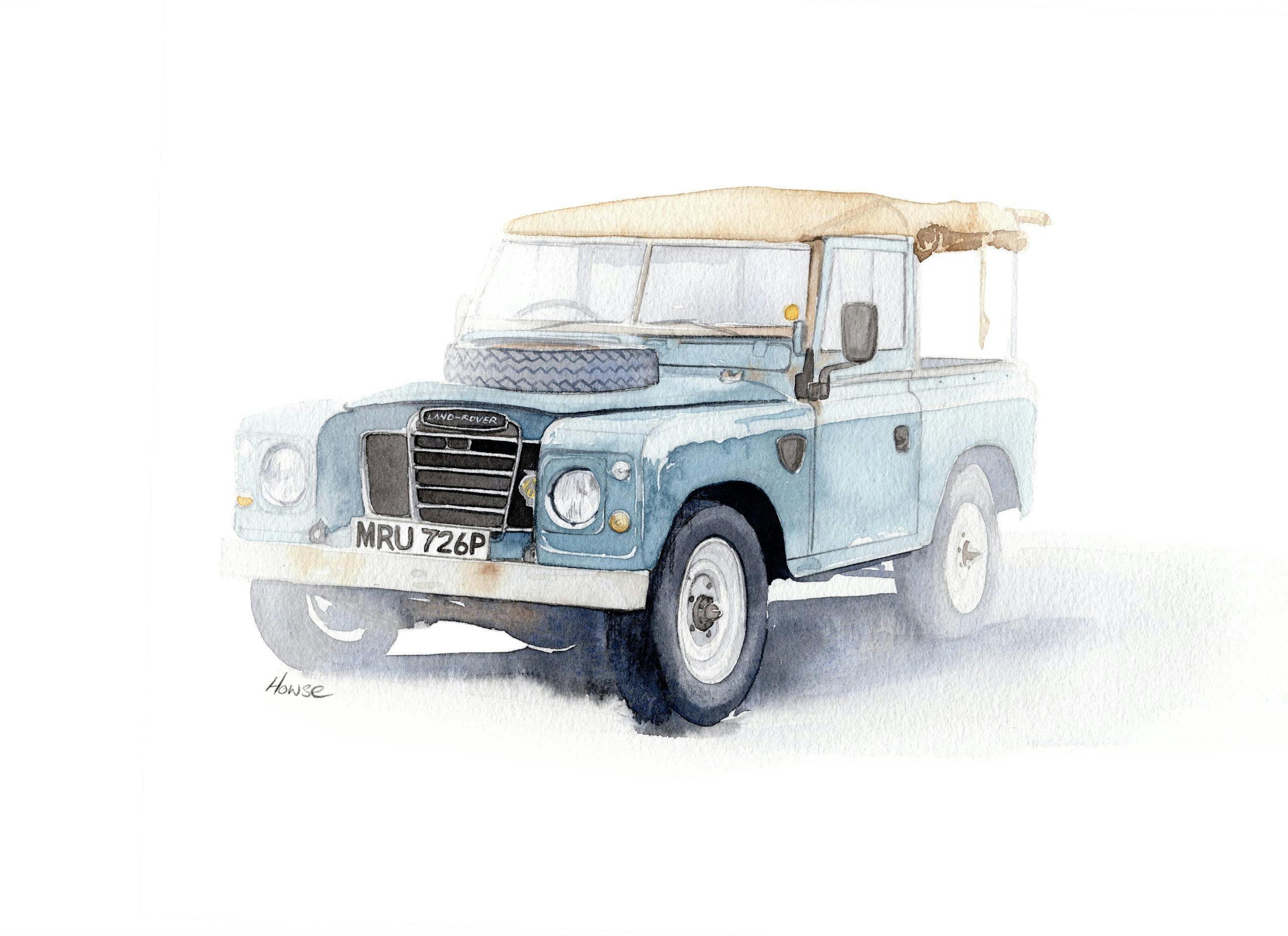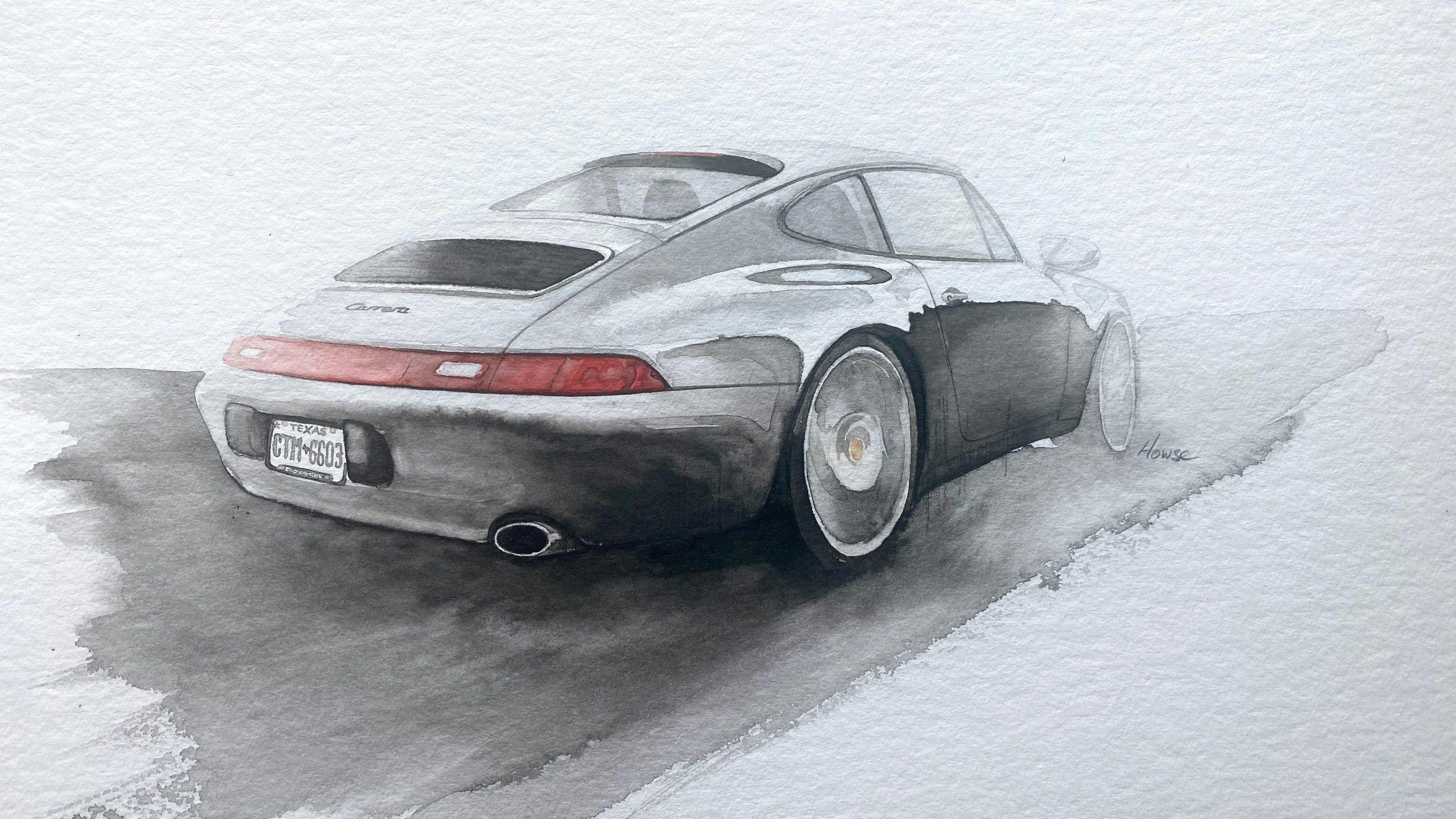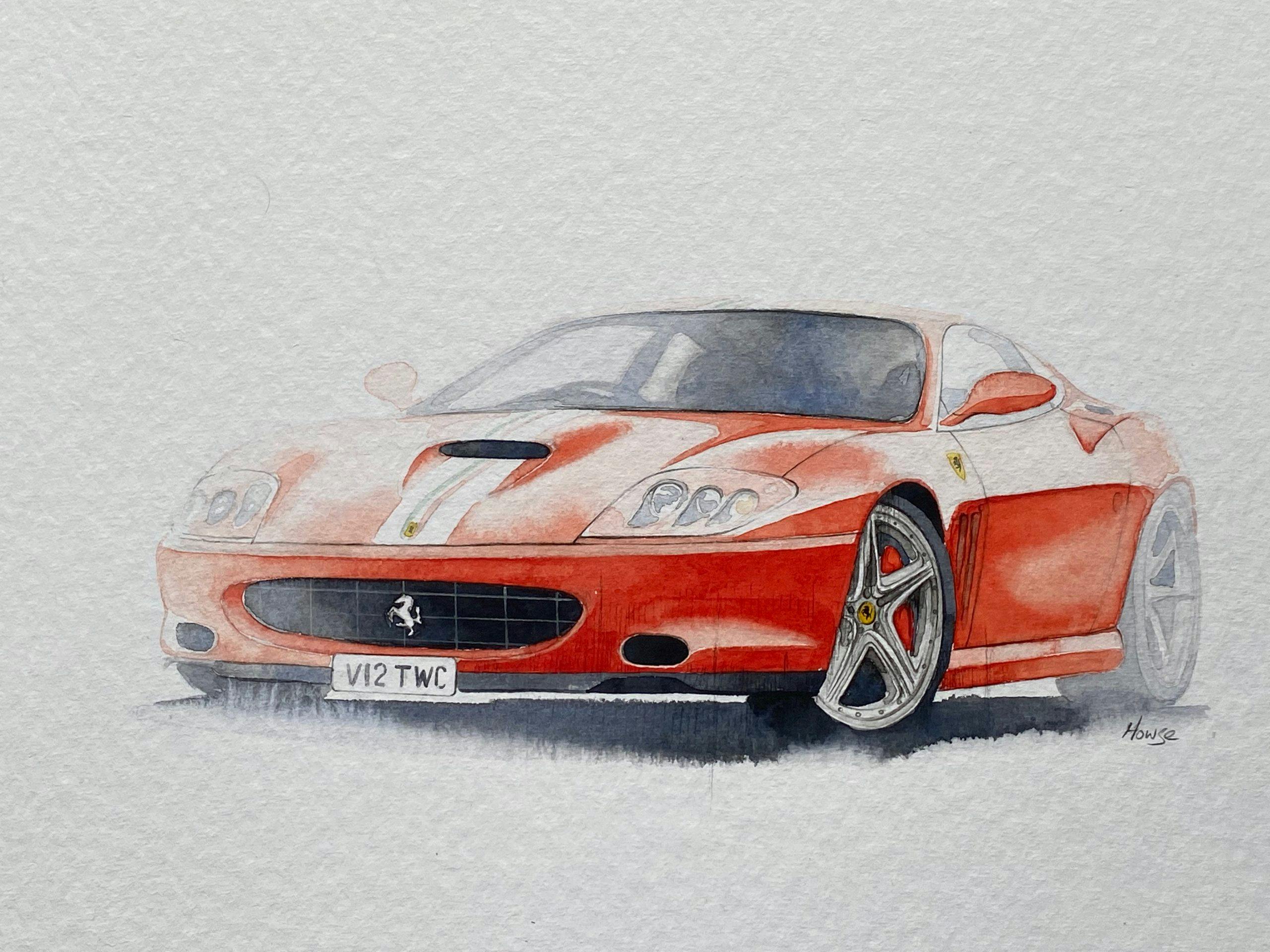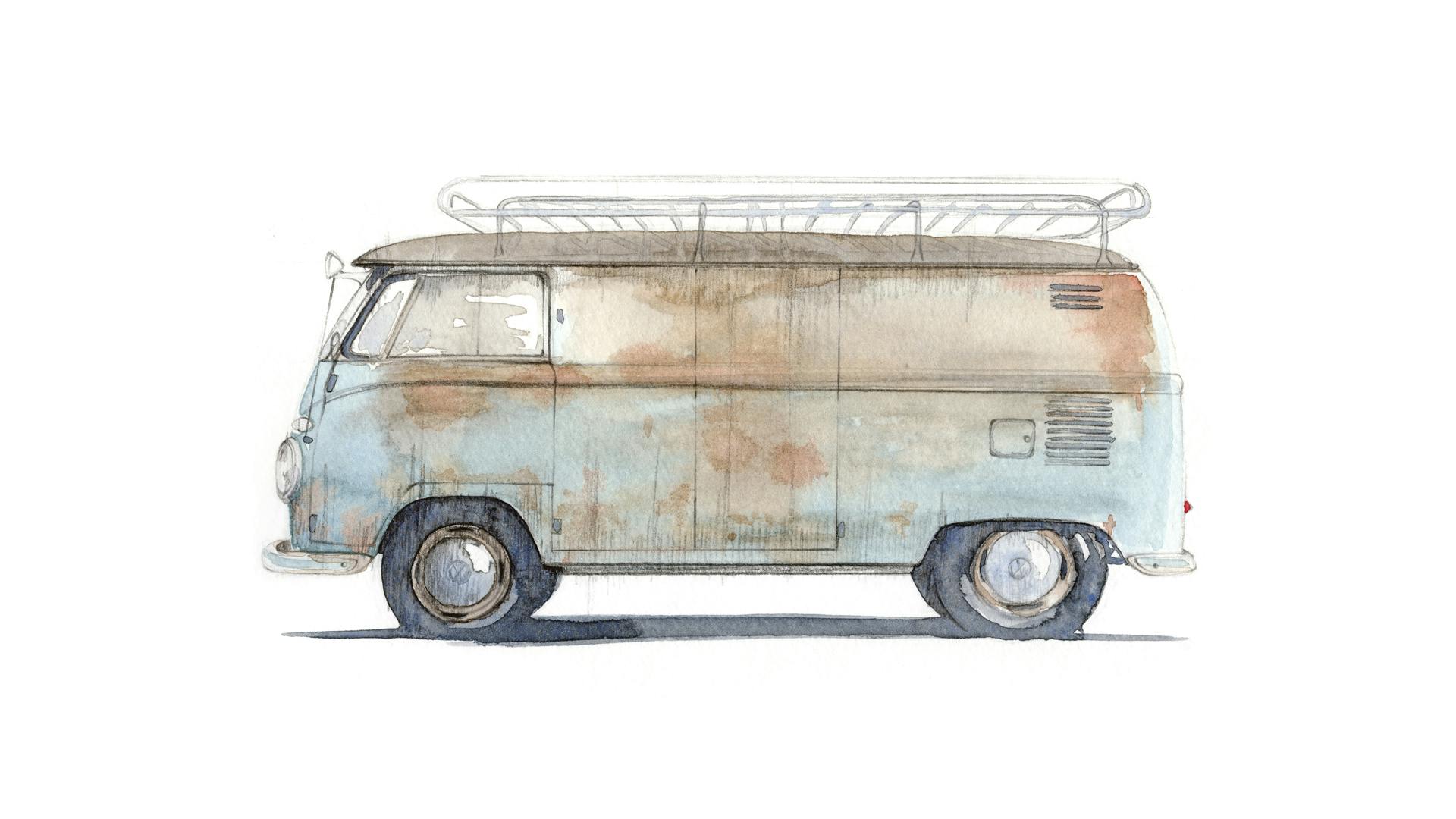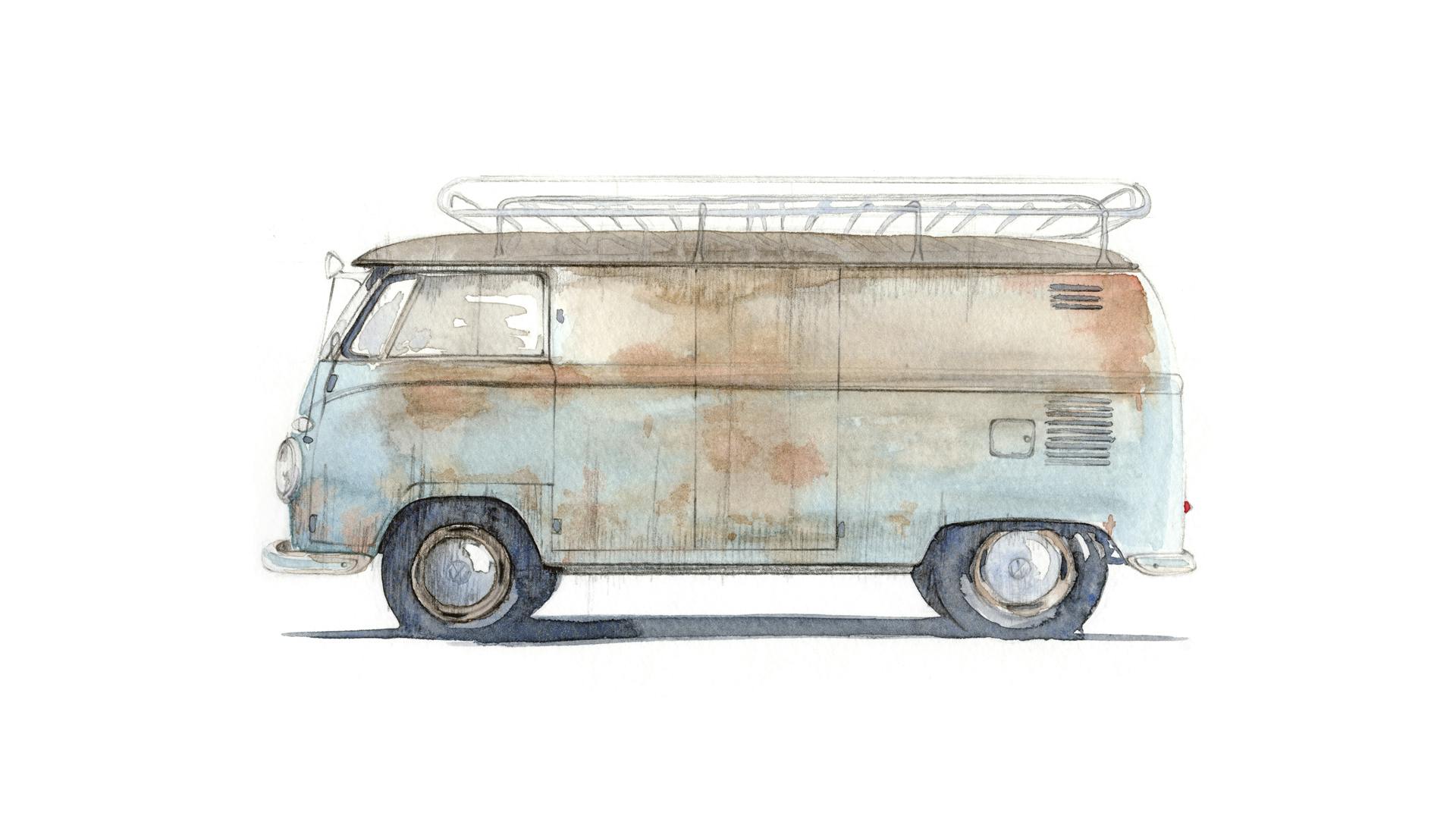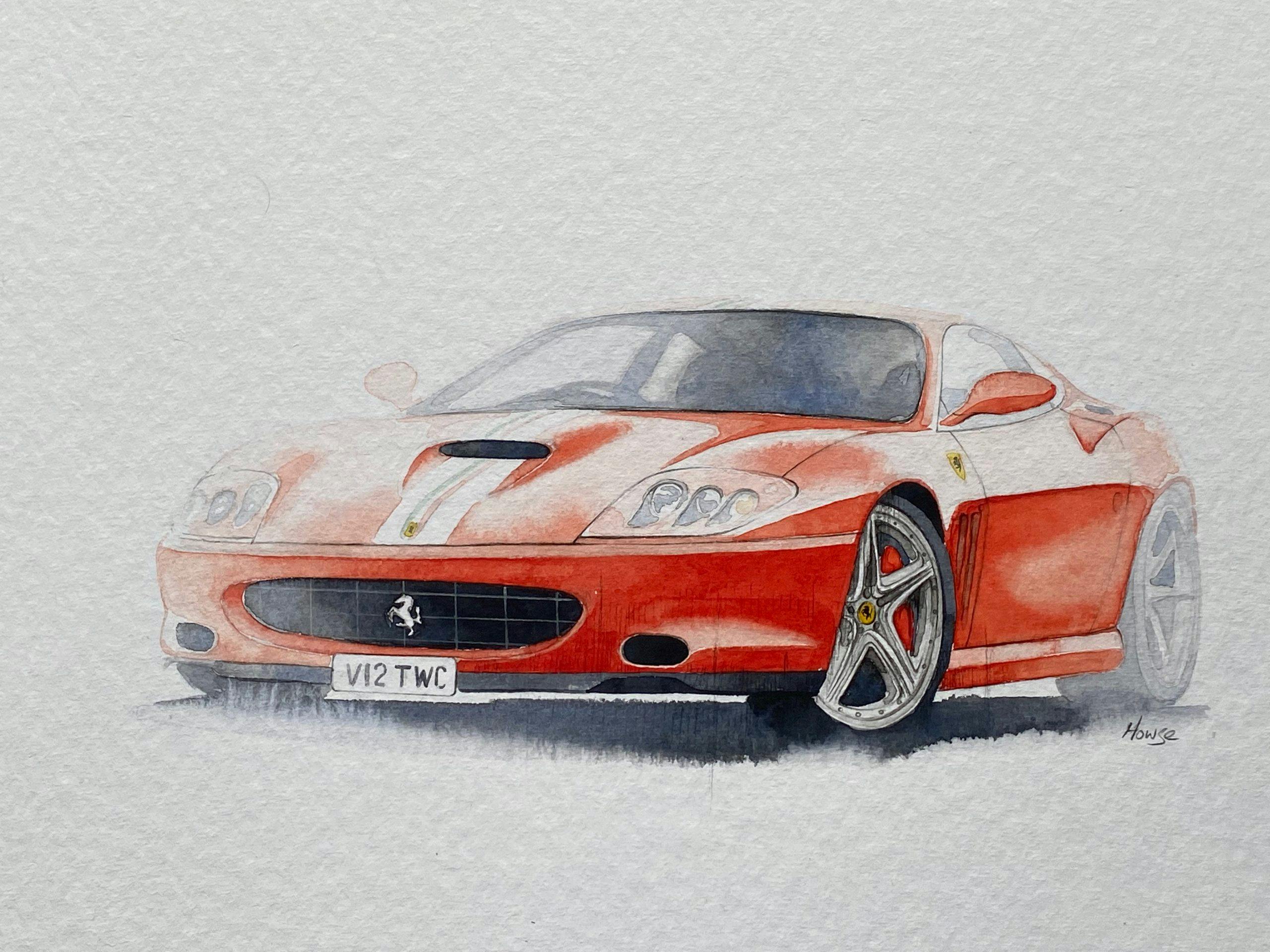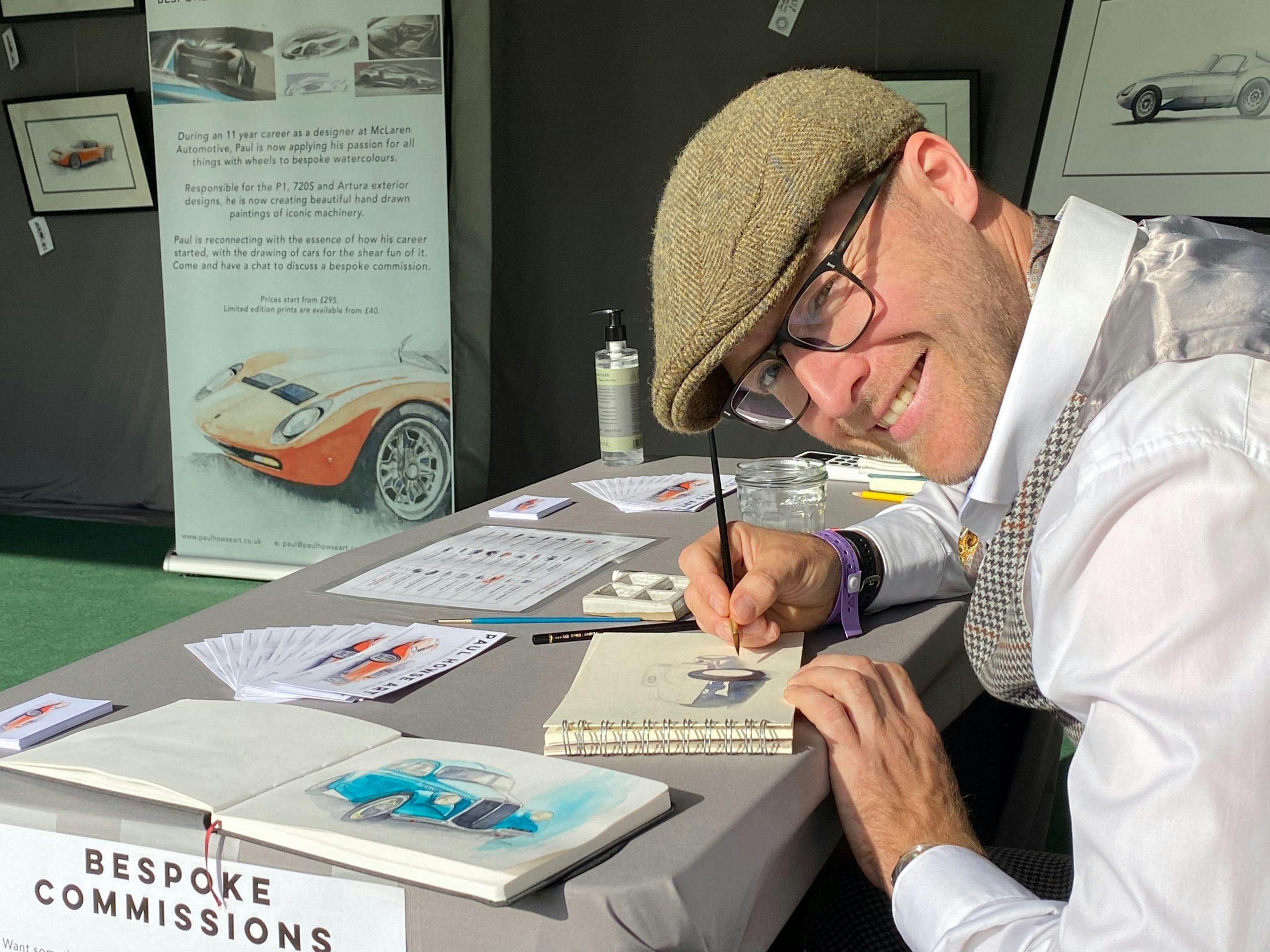Media | Articles
The former McLaren designer whose automotive art gave him a new lease on life
After over a decade at McLaren, and a career that had seen him work on the P1, 570, 720S, and the new Artura, things began to unravel for Paul Howse.
The high pressure of his job as Design Manager took its toll and in early 2020, Paul signed off work due to stress. Then, while his personal world was being turned upside down, the outside world followed suit as the pandemic hit. Initially he was put on furlough and, later in the year, along with 1200 other McLaren employees, he was let go.
Fortunately, by this time Paul had already begun his journey on the road to recovery by getting back to something he had loved doing since childhood—drawing cars.
Paul was born into the world of motorsport, often joining his father trackside, where he worked as an engineer on Spice’s Group C program and later assembled the ultimate road car: the McLaren F1.
“It was in my psyche as I was growing up. I knew I wanted to work with cars,” says Paul. Studying automotive design first at Newcastle and then the prestigious Royal College of Art, Paul soon found himself working where his father had, at McLaren in Woking, U.K.
Marketplace
Buy and sell classics with confidence
“I graduated in 2008 just as the financial crash hit, which wasn’t ideal. I had a few interviews with various people like Jaguar, Lotus and a few other consultancies, but they all had hiring freezes. Then, early in 2009, I got a phone call from Frank Stephenson, who asked me to come for an interview at McLaren. It wasn’t a huge studio at that point. They were just finishing off the 12C, and McLaren was starting a new company, McLaren automotive. So I was really lucky to be there right at the beginning,” he recalls.

This dream start to a career continued when Stephenson picked Paul’s exterior theme for the P1. “I was obviously young, quite naive, green around ears, but I had a lot of ambition and creativity and I was very fortunate that my theme was chosen.”
Paul went on to design the interior of the 570 and the exterior of the 720. “With 720 it really felt like was starting to culminate in distilling that vision for what McLaren design language and what McLaren design and engineering should be. So I think that’s probably the car I’m most proud of, as a whole product,” he says.
Next came the Artura and the added pressure of being the design manager for the project, which would eventually become overwhelming.
“I’d been there 11 years and I had a bit of a breakdown. It was a lot of high pressure for a long time. Delivering at the highest level just got to me. The guys McLaren were really good with giving me time to recover, then with COVID and lockdown pretty much the whole studio was furloughed.
“I was having therapy which at the start I didn’t think really was doing much. I didn’t know anyone who’d had a breakdown, I didn’t know anyone who’d been in therapy. It was all new to me and that’s probably one of the reasons I’ve been so open about mental health. I thought I was just broken. I felt broken. If you break a bone you get treatment and six weeks later it’s fixed and you carry on but with mental health it’s not like that and it takes a long time.
“I was told by the therapist to try and indulge myself, to do stuff that made me feel good. He said ‘You’re a good person at the heart of it all, you’ve been taking a lot of weight of other people’s problems on your shoulders and you need to do this stuff yourself for a while’ and that that did help massively.”
Paul picked up a photograph of a friend’s C2 Corvette Stingray race car, taken in the pit lane at Goodwood, and broke out his H3 pencils. Inspired by his grandmother’s love of watercolors he opted for this traditional medium instead of the car designers’ trademark marker pens.
“It was coming back to what I enjoyed doing and that really helped me recover massively. I started an Instagram page and a couple of people asked for commissions. And I started thinking, maybe I can use this as a supplementary income while we’re on furlough pay. Then there were mass redundancies at McLaren and I was one of them. But actually, it was one of the best things that’s happened because I just felt like this enormous weight lifted off my shoulders. I don’t regret my time at McLaren at all as it was it was an amazing time with amazing projects, but this next phase of my career is feeling really good at the moment and it’s just it’s very different.
“I hadn’t really done hardly any watercolor. The markers that I used to use and still do use when designing are AD Chartpak. They’re an American brand and they’re a very wet marker. So you put them on and they stay wet quite a long time. You can blend them really nicely, and I always thought it would be similar to watercolor in a way. The way I do my Photoshop airbrush renderings was again quite fluid and blendy and I always fancied having a go at watercolor but I just never had the time.”
The process starts with a pencil sketch where Paul concentrates on getting the proportions and perspective correct, positioning the wheels and windows first. “Everything is freehand. I just feel it,” says Paul. Next Paul places the horizon line for the body with a light wash, then works on building up the form and adding reflections. Finally the finest details are picked out with a super fine brush.
The result is technical, but beautiful. “I take a lot of pride in getting the details right but at the same time I know I need to keep them fluid and elegant and I pick the focal point of the painting and then fade out the corners almost, which is what we used to do with our design renderings.”
Depending on size each piece takes between two and four days to complete and bespoke commissions start at around $400, while there’s also a wide variety of prints from patinated VW vans to racing Porsches, hot rods, tractors and, yes, the odd McLaren available on his website, if you’re too impatient for the three-month waiting list.
Business is booming then, but it’s the impact on his health that Paul is most grateful for. “I’m much happier and healthier now than I was and I just feel very lucky to have found this this route. There’s a lot of people still struggling out there. Eighteen months after it happened I’m only really starting to feel a bit more normal again so it’s a huge process. The painting really has helped me. I am doing something that I love and trying to take my mind off the bad stuff.”



